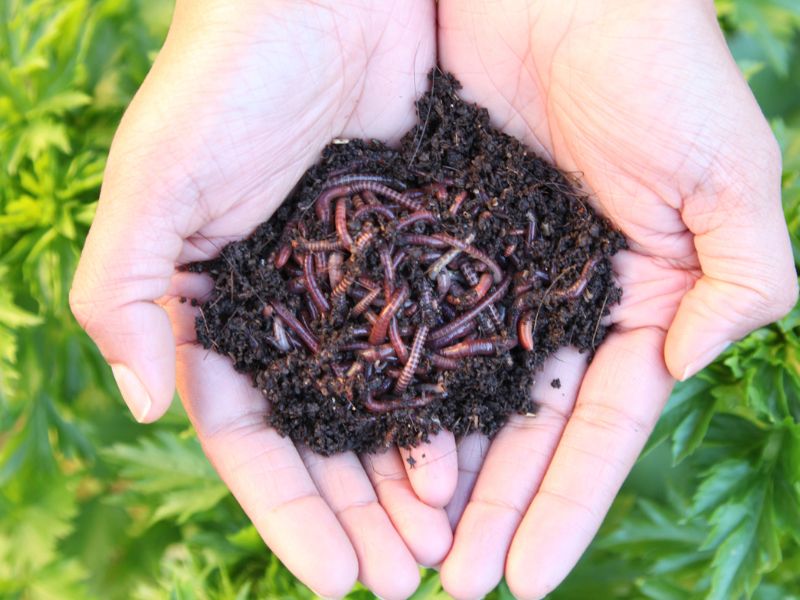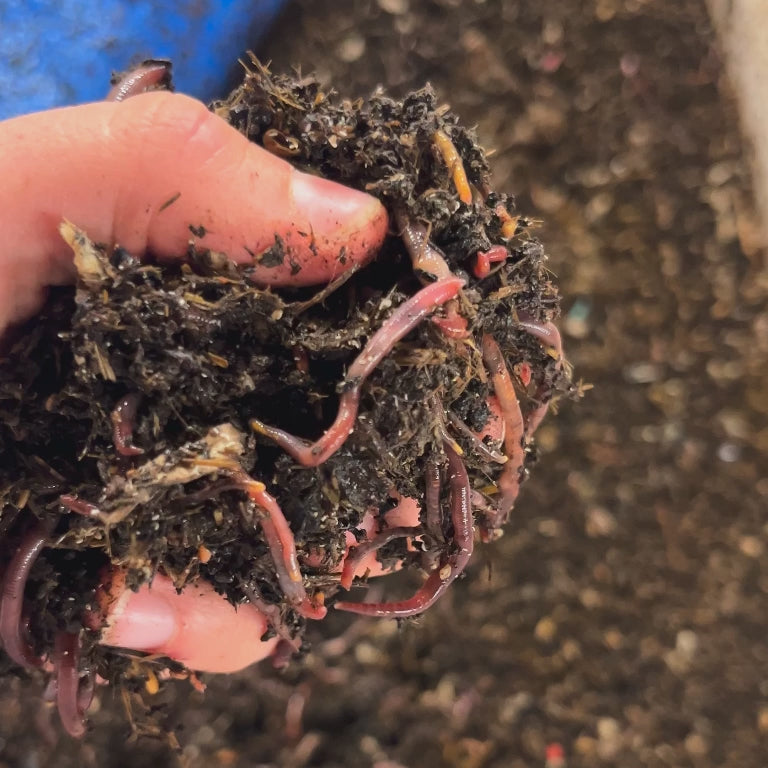Red Wiggler Composting: How to Begin and Maintain an Effective Worm Bin
Red Wiggler Composting: How to Begin and Maintain an Effective Worm Bin
Blog Article
Comprehending the Perks of Red Wiggler Composting: Just How This Reliable Approach Transforms Organic Waste Into Nutrient-Rich Soil Changes
Red Wiggler composting, employing the species Eisenia fetida, offers an engaging method to organic waste monitoring, converting kitchen scraps and lawn debris right into valuable dirt amendments. This approach not only boosts dirt fertility yet also addresses pushing ecological concerns, including garbage dump waste reduction and greenhouse gas emissions.
What Are Red Wigglers?
Red wigglers, medically understood as Eisenia fetida, are a varieties of earthworm that play an essential function in vermicomposting systems. These worms are characterized by their reddish-brown shade, fractional bodies, and a distinct capacity to flourish in organic-rich atmospheres, making them excellent for composting applications - Red Wiggler Composting. Unlike their garden-dwelling equivalents, red wigglers choose to populate the upper layers of dirt, where rotting matter is bountiful
Generally gauging between 3 to 4 inches in length, red wigglers have a high reproductive price, enabling them to increase swiftly under optimal conditions. They have a distinct digestion system that permits them to process natural waste effectively, transforming it into nutrient-rich castings, which are extremely valuable for plant growth.
Their tolerance to varying moisture levels and temperature varies better boosts their energy in vermicomposting arrangements, making them a favored option amongst composting lovers. Additionally, red wigglers are aerobic microorganisms, which requires a well-aerated composting atmosphere, ensuring reliable disintegration. Recognizing the biological characteristics and habits of red wigglers is necessary for optimizing their usage in lasting waste monitoring practices.

Benefits of Vermicomposting
Taking advantage of the power of vermicomposting deals a wide range of environmental and agricultural advantages. First of all, it considerably lowers natural waste in garbage dumps, thus lessening methane emissions, a powerful greenhouse gas. By diverting food scraps and backyard waste to vermicomposting, we sustain an even more lasting waste administration system.
In addition, vermicomposting improves dirt health. The spreadings produced by red wigglers are rich in important nutrients, germs, and enzymes, improving soil structure and fertility. This nutrient-rich modification promotes robust plant development and increases water retention, decreasing the demand for chemical fertilizers.
Moreover, vermicomposting fosters biodiversity in the soil environment. The introduction of useful microorganisms from worm spreadings aids in disease reductions and nutrient cycling, developing a much healthier atmosphere for plants.
Economically, vermicomposting decreases the prices connected with chemical inputs and waste disposal. Garden enthusiasts and farmers can cultivate high-quality fruit and vegetables at reduced expenditures, adding to food safety and security and sustainability.
How to Begin Composting
Starting a composting endeavor can be a gratifying and straightforward procedure. This will certainly help maintain a balanced temperature, crucial for the composting procedure.
Gather organic materials such as kitchen scraps, lawn waste, and shredded paper. Go for a well balanced mix of 'green' products, high in nitrogen (e.g., fruit scraps, coffee grounds), and 'brown' products, rich in carbon (e.g., dried out Find Out More leaves, cardboard) A proportion of roughly 2:1 eco-friendly to brownish products is suitable.
Beginning layering your materials, ensuring appropriate air flow by turning the heap routinely. This promotes cardio decay, minimizing smells and speeding up the procedure. Display dampness degrees; the garden compost must seem like a damp sponge yet not excessively damp.
Nutrient Account of Vermicompost
Composting, specifically with red wigglers, generates a nutrient-rich product understood as vermicompost. In addition, it gives trace elements like magnesium, calcium, and iron, promoting robust plant advancement and boosting dirt health and wellness.
The microbial activity present in vermicompost additionally enhances its profile, introducing useful microorganisms and fungi that promote vitamins and mineral availability and uptake in plants. This organic part aids in suppressing plant illness and enhancing soil framework, resulting in improved water retention and oygenation.

Ecological Influence of Composting
The ecological influence of composting, specifically with the use of red wigglers, is complex and profound. This More hints technique considerably reduces the quantity of natural waste sent to garbage dumps, which consequently reduces greenhouse gas exhausts, particularly methane-- a powerful factor to environment modification. By drawing away natural materials from garbage dumps, red wiggler composting not just aids mitigate ecological destruction but also promotes sustainable waste management methods.

Additionally, composting contributes to carbon sequestration, as the procedure records co2 from the ambience and shops it in the dirt. This all-natural process help in combating climate modification while enhancing the soil - Red Wiggler Composting. Generally, red wiggler composting provides a viable, green solution for waste monitoring and environmental sustainability, advertising healthier environments and a more lasting future
Final Thought
Finally, Red Wiggler composting serves as a reliable technique for transforming organic waste right into valuable dirt amendments. The process not just improves dirt fertility and framework but additionally mitigates ecological problems connected with waste disposal. By making click here for more info use of Eisenia fetida, this form of vermicomposting adds to improved biodiversity and sustains lasting farming methods. Eventually, Red Wiggler composting plays a crucial function in promoting healthier ecosystems and attending to the difficulties of environment modification.
Red Wiggler composting, employing the varieties Eisenia fetida, offers a compelling technique to natural waste management, transforming kitchen area scraps and lawn debris into useful dirt amendments. Unlike their garden-dwelling counterparts, red wigglers prefer to occupy the upper layers of soil, where rotting matter is bountiful.
The castings created by red wigglers are abundant in crucial nutrients, microbes, and enzymes, boosting soil structure and fertility. The nutrient-rich by-products of red wiggler activity improve dirt structure, increase water retention, and promote biodiversity within the dirt ecological community.In conclusion, Red Wiggler composting offers as an efficient method for converting natural waste into beneficial soil changes.
Report this page